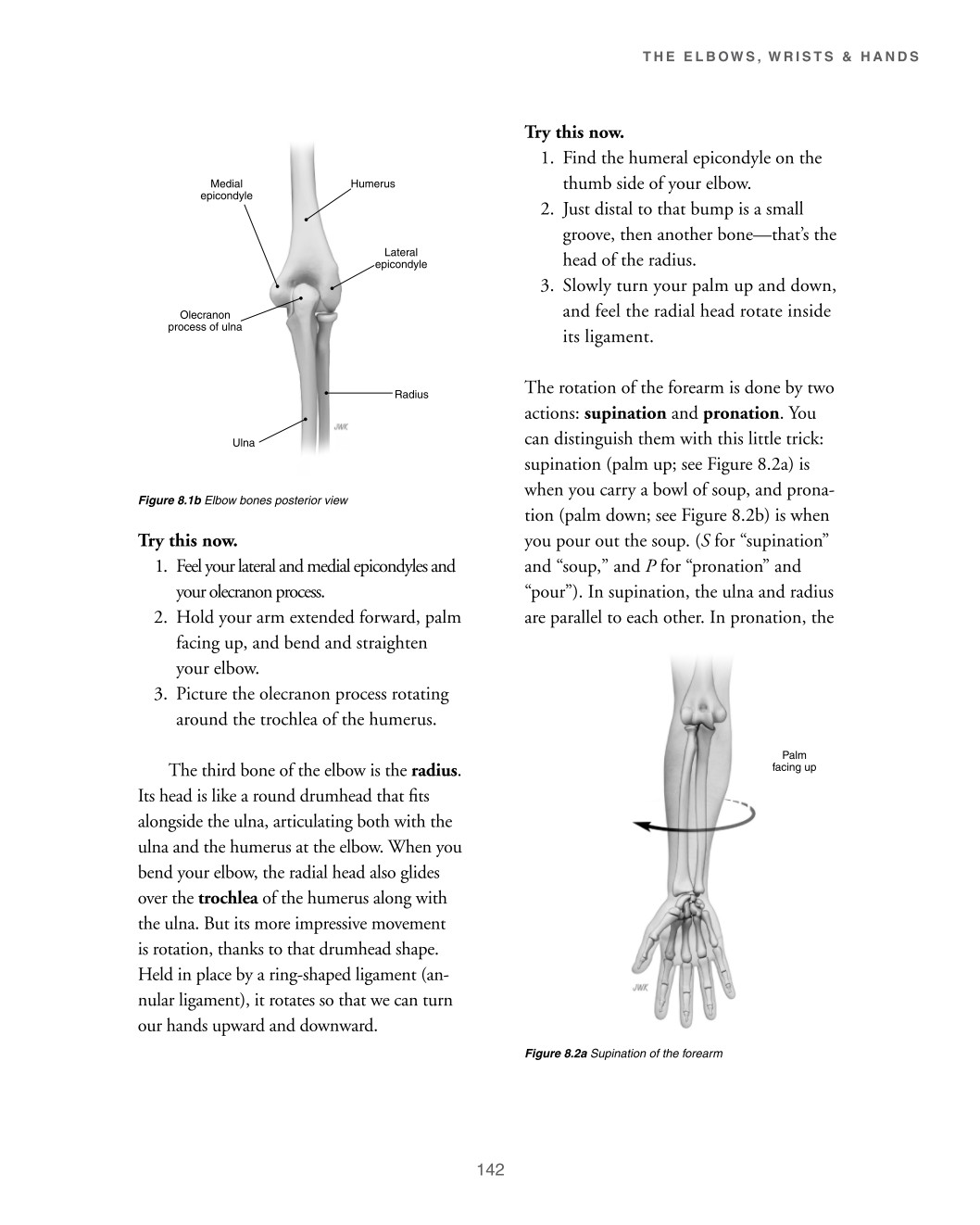

THE ELBOWS, WRISTS & HANDS
Medial Humerus epicondyle Try this now. 1. Find the humeral epicondyle on the thumb side of your elbow. Lateral epicondyle Olecranon process of ulna 2. Just distal to that bump is a small groove, then another bone—that’s the head of the radius. 3. Slowly turn your palm up and down, and feel the radial head rotate inside its ligament. Radius Ulna Figure 8.1b Elbow bones posterior view Try this now. 1. Feel your lateral and medial epicondyles and your olecranon process. 2. Hold your arm extended forward, palm facing up, and bend and straighten your elbow. 3. Picture the olecranon process rotating around the trochlea of the humerus. Palm The third bone of the elbow is the radius. Its head is like a round drumhead that fits alongside the ulna, articulating both with the ulna and the humerus at the elbow. When you bend your elbow, the radial head also glides over the trochlea of the humerus along with the ulna. But its more impressive movement is rotation, thanks to that drumhead shape. Held in place by a ring-shaped ligament (an- nular ligament), it rotates so that we can turn our hands upward and downward. Figure 8.2a Supination of the forearm facing up The rotation of the forearm is done by two actions: supination and pronation. You can distinguish them with this little trick: supination (palm up; see Figure 8.2a) is when you carry a bowl of soup, and prona- tion (palm down; see Figure 8.2b) is when you pour out the soup. (S for “supination” and “soup,” and P for “pronation” and “pour”). In supination, the ulna and radius are parallel to each other. In pronation, the
142